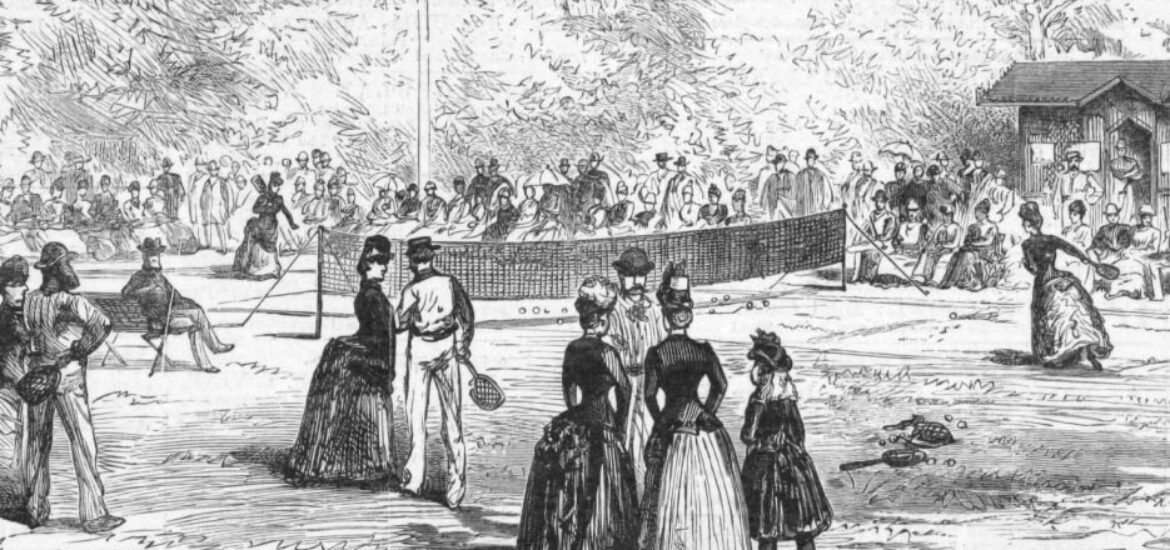
Tennis Through the Ages
Tennis, known for its elegance, athleticism, and strategic depth, has a rich and fascinating history that spans several centuries. From its early origins in medieval France to becoming a globally celebrated sport, tennis has evolved significantly, leaving an indelible mark on the world of sports. Join us as we explore the captivating journey of tennis, highlighting its origins, key milestones, and the legends who have shaped the game.
Origins of Tennis: The Medieval Beginnings
The origins of tennis can be traced back to 12th century France, where a game known as “jeu de paume” (game of the palm) was played. Initially, players used their hands to strike a ball, but by the 16th century, racquets were introduced, and the game began to resemble modern tennis. The sport was particularly popular among French nobility, earning it the moniker “the sport of kings.”
The Birth of Modern Tennis: 19th Century England
The modern game of tennis, as we know it today, began to take shape in the late 19th century. Major Walter Clopton Wingfield is credited with devising the game of lawn tennis in 1873, which he called “Sphairistikè” (Greek for “ball-playing”). Wingfield’s version was played on an hourglass-shaped court, but the rectangular court we recognize today soon became standard.
The first official tennis tournament, the Wimbledon Championship, was held in 1877 at the All England Club in London. Spencer Gore won the inaugural singles title, and the tournament’s success helped popularize tennis in England and beyond. Wimbledon remains the oldest and most prestigious tennis tournament in the world, symbolizing the sport’s rich tradition and history.
The Global Spread of Tennis: Early 20th Century
Tennis quickly spread to other countries, with the United States, France, and Australia becoming prominent centers for the sport. The United States National Lawn Tennis Association (USNLTA) was founded in 1881, and the first U.S. National Championships (now the US Open) were held the same year. The French Open (originally the French Championships) began in 1891, and the Australian Open followed in 1905.
The early 20th century saw the establishment of the Davis Cup in 1900, an international team competition that further boosted the sport’s global appeal. The tournament’s success highlighted the growing popularity of tennis and the emergence of international rivalries.
The Golden Age of Tennis: Mid-20th Century
The mid-20th century is often regarded as the golden age of tennis, marked by legendary players and iconic matches. Players like Rod Laver, who achieved the Grand Slam (winning all four major tournaments in a single year) twice, and Billie Jean King, who won 39 Grand Slam titles, became household names and inspired future generations.
The Open Era, which began in 1968, revolutionized tennis by allowing professional players to compete alongside amateurs in Grand Slam tournaments. This change led to an increase in the sport’s popularity and the rise of new stars like Björn Borg, John McEnroe, Chris Evert, and Martina Navratilova.
The Modern Era: Technology and Globalization
The modern era of tennis is characterized by technological advancements, increased commercialization, and globalization. Innovations such as electronic line-calling systems, including Hawk-Eye, have improved the accuracy of officiating. The introduction of larger and more powerful racquets, along with advances in training and nutrition, has elevated the level of play.
Tennis has become a truly global sport, with players from diverse backgrounds achieving success on the world stage. The likes of Roger Federer, Rafael Nadal, Novak Djokovic, and Serena Williams have not only set new records but have also captivated fans with their extraordinary skill and sportsmanship.
The ATP and WTA Tours feature a packed calendar of tournaments, culminating in the four Grand Slams: the Australian Open, the French Open, Wimbledon, and the US Open. These tournaments are among the most-watched sporting events globally, showcasing the sport’s widespread appeal.
Tennis’s Impact Beyond the Court
Tennis’s influence extends beyond the court, impacting culture, society, and even politics. The sport has been a platform for social change, with players like Arthur Ashe advocating for civil rights and equality. The “Battle of the Sexes” match between Billie Jean King and Bobby Riggs in 1973 was a landmark event for gender equality, highlighting the importance of women in sports.
Conclusion: A Bright Future for Tennis
As we reflect on the rich history of tennis, it’s evident that the sport has continually evolved, overcoming challenges and embracing innovations. The journey from medieval courts to modern arenas is a testament to tennis’s enduring appeal and its ability to inspire and unite people worldwide. With new talents emerging and technology enhancing the game, the future of tennis looks brighter than ever.
Join us on our website as we celebrate the history, latest updates, and thrilling moments from the world of tennis. Let’s honor the legacy of this beautiful game and look forward to the future of tennis together.




